How OLV manages a two-thousand workers operation with custom, easy to use apps.

With an expanding and ever increasingly complex operation, Oliveira Engenharia soon realized spreadsheets weren’t going to work for them anymore. Looking for a more fitting solution, what they found in Jestor was the best tool to scale their field operations smoothly.

Numbers
2000+
Contractors on field
1000+
Monthly inspections
40 hours+
Time saved on month-end close process
About Oliveira Engenharia
Oliveira Engenharia is an engineering company that inspects and provides technical reports for land properties and buildings.
They provide a key service for the construction industry, receiving a high-volume of requests that must be answered as swiftly as possible.
When spreadsheets start to fail
Imagine running a high-volume operation, one that can span across many cities and thousands of different contractors. For Oliveira Engenharia, this was a reality they were already facing, with an important caveat: all of it was managed through Excel spreadsheets. While it served their purposes for a good time, the unmistakable hints of trouble were already starting to pop up: inputting, treating, and correcting data was taking far more time than they could spare, and mistakes were constantly slipping through the cracks, no matter how hard their team tried to keep things tidy.
Problems started to pour through nearly every step of their processes:
- Some requests would get lost amidst all the data, leading to missed appointments.
- Finding the best contractors for a specific job was a time consuming process, involving sorting through data with many different manual filters.
- Paying the contractors involved sorting through spreadsheets and manually sorting out the data, which could be time consuming at best, and result in financial losses at worst.
- Every process had to be double-checked, to avoid error propagation. A small mistake at the start of a process could lead to many mistakes at the end of it.
Those were just some of the issues Oliveria Engenharia faced because of the unreliable nature of spreadsheets. It became quite apparent that, if they were going to keep scaling up, they would need to move on to better solutions. One of the problems, however, was that it was very difficult to find software that could encompass the intricacies of their operations. Off-the-shelf software could solve some of their issues, but not all. Flexibility was one of the reasons they were so keen on using spreadsheets in the first place.
Oliveira Engenharia had already tested Jestor before in a more cursory manner. At the time, they had liked the software, but didn’t feel the need to transfer their whole operation to it, as spreadsheets were still able to handle it. With this rapidly changing, however, they decided to give it another try–and were blown away by what they were able to build.

”When it comes to customizing, Jestor is amazing. Whenever I need something, whether it’s a new field or automation, I just go ahead and do it. I don’t need to submit it as feedback, or pay for someone to develop it. We have full autonomy, and things move a lot faster than with traditional platforms.”
Lucas Arantes
Founder at Oliveira Avaliação e Perícias de Imóveis
No-code problem solving
When building inside Jestor, one thing Oliveira Engenharia had in their favor was that they were already experts of their own internal processes. They knew inside out what they already had, what their main problems were, and what they strived to accomplish. So when presented with a tool that empowered them to build whatever they wanted without a single line of code, there was nothing holding them back from having the perfect tool for their team.
By using a combination of apps, relational data, and no-code automations, they were able to build a scalable solution that not only allowed them to work faster, but have even more reliable information.
Before
Where did we store that?
Data was uncentralized, with the team using a combination of online Excel and Dropbox to build a pseudo system. A lot of time was wasted searching for the correct files and spreadsheet tabs.
Collaborative chaos
The chaotic nature of collaborative spreadsheets made it so teams would sometimes effectively get in the way of each other. Changing a filter or creating a column could send someone else’s work down the drain.
Slipping through the cracks
Operating a high volume of data in spreadsheets is always prone to error. With innumerous daily requests, some were bound to get lost along the process, leading to attrition with clients.
After
One click away
Connected data makes sure relevant info is never more than a click away. Files are stored in the records themselves, and centralized record views combine all connected data into easy to navigate hubs.
Personalized, focused views
Team members can have their own views, with their own filters and components, making sure they can stay focused on their tasks. Even when looking at and operating the same table, Jestor’s user-centric, contextual interface makes sure everything stays tidy, optimizing collaborative work.
Air-tight processes
Nothing gets lost. No request is left unchecked during the day, something vital considering the short window they have between a request submission and scheduling their inspections. A whole host of auxiliary features, such as Jestor tasks, help the team work seamlessly as one unit.
TLDR: A spreadsheet-based solution works on small scales, but fails to keep up with a fast-growing company. Oliveira Engenharia used Jestor’s relational database to keep the heart of their processes while allowing them to scale.

“We lost a lot of time filtering and treating data on spreadsheets. Now, things are ten times faster. We get a request for a specific city, we click on it, and know the contractors we can allocate there.”
Lucas Arantes
Founder at Oliveira Avaliação e Perícias de Imóveis
Saving time and money
The thing people at Oliveira Engenharia notice the most about using Jestor is how much manual work it saves them from doing. Paying contractors, for example, was one of their most dreaded monthly processes. Between sorting out the many requests and fetching information between different spreadsheets, figuring out who to pay and how much to pay could easily take up the entire weekend.
If that wasn’t bad enough, when dealing with the massive amount of data they needed to sort through and manually copy, a few mistakes were bound to come up here and there. In this specific process, this meant either underpaying a contractor (which created confusion and stress) or overpaying them (and losing money in the process).
In Jestor, they can now sort out the information, print out a report, and double check the information in just a few hours. Jestor is not only saving them hours: costly mistakes are an all time low.
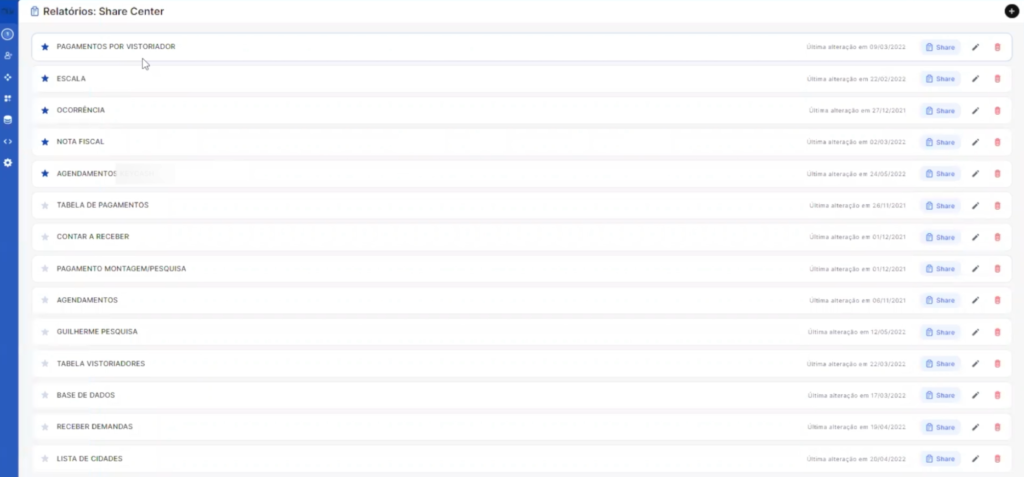
Internal process examples
Process overview
From the main monitoring/control table of the entire flow of schedules, inspections, assembly of reports and those responsible for each task
He created internal Apps for a better general monitoring with filtered data to have a more customized view, such as the number of scheduled/completed inspections, open cases, performance of each team member.

Also, each team member created their own internal App with components and filtered data to have their own view of what they need most and not miss any task.
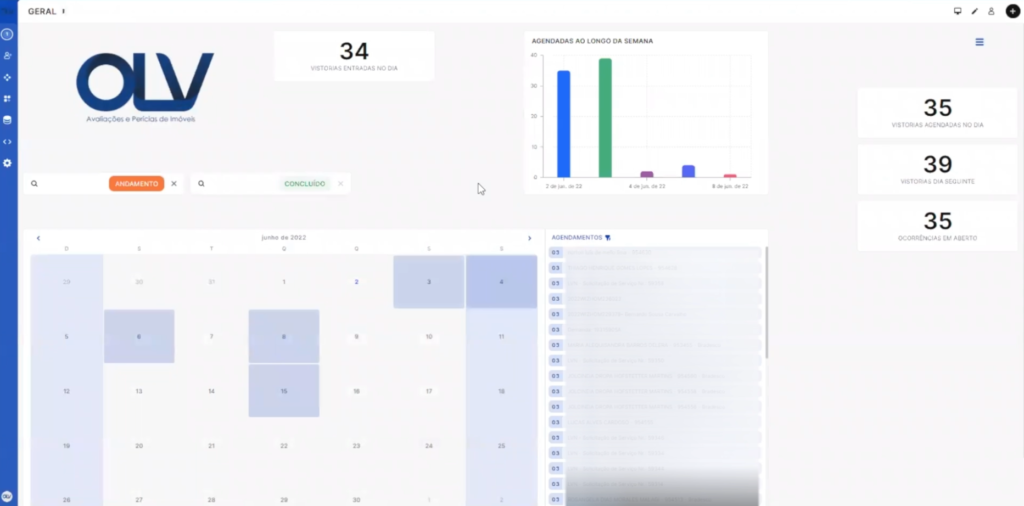
Accounts payable and accounts receivable
When inspections are marked as completed, the accounts payable for the surveyors and technical team, and the company’s accounts receivable are automatically generated through no-code automations.
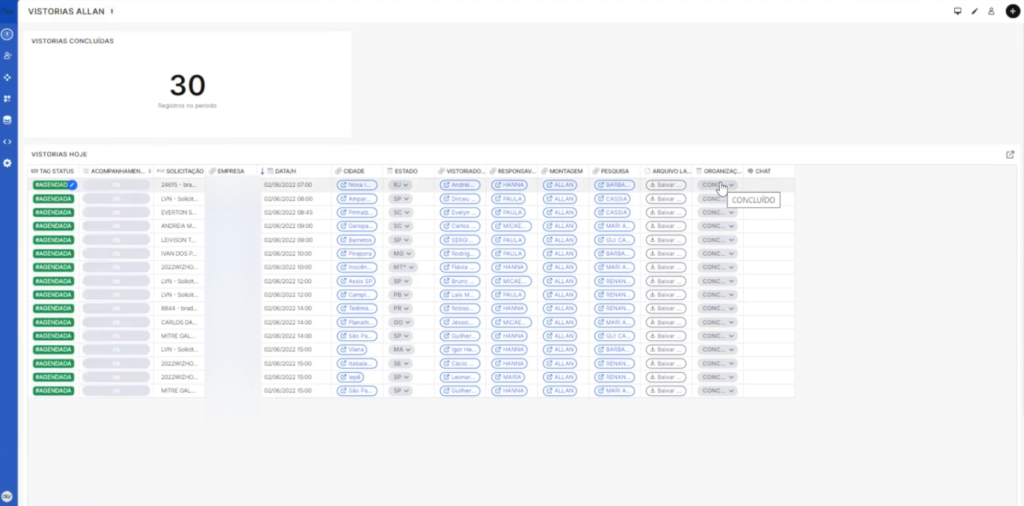
Analysis by city
Due to the connected fields, they have a complete view of all surveys carried out, surveys, accounts payable and receivable, in addition to having full control of the tasks that are in progress in that city.
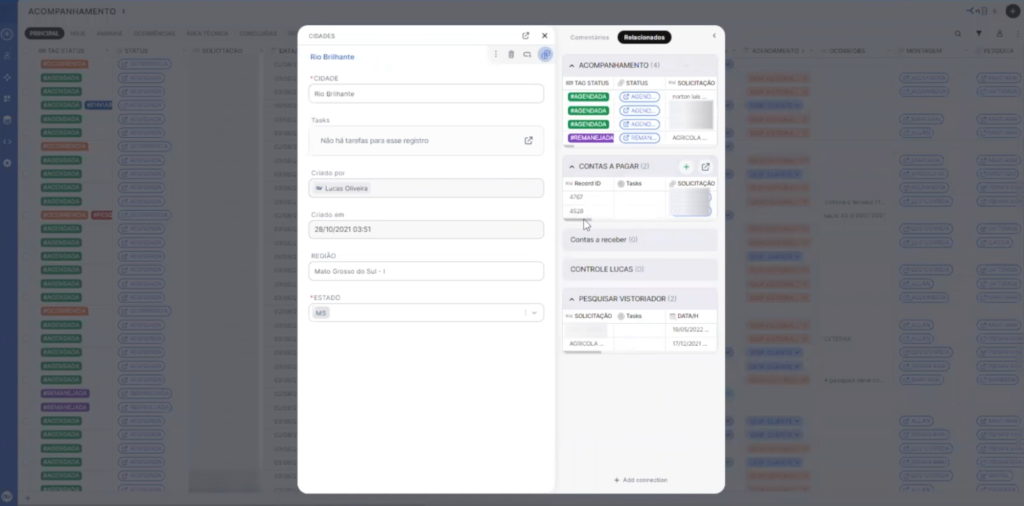
No-code automations
Every time a report is completed, an email is automatically sent with the report attached to the client and an internal message on the company’s discord for the team to follow up
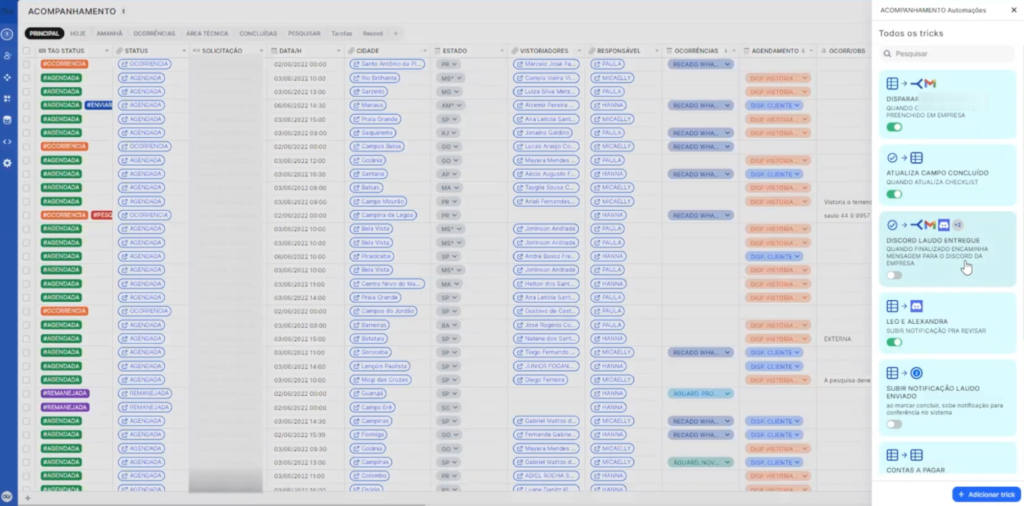
Forms to prospect clients
They stopped using google forms that sent the data to google spreadsheet and now with customizable forms from jestor he already receives the data inside his table and created a no-code automation to receive notification and also a message on discord to warn the team
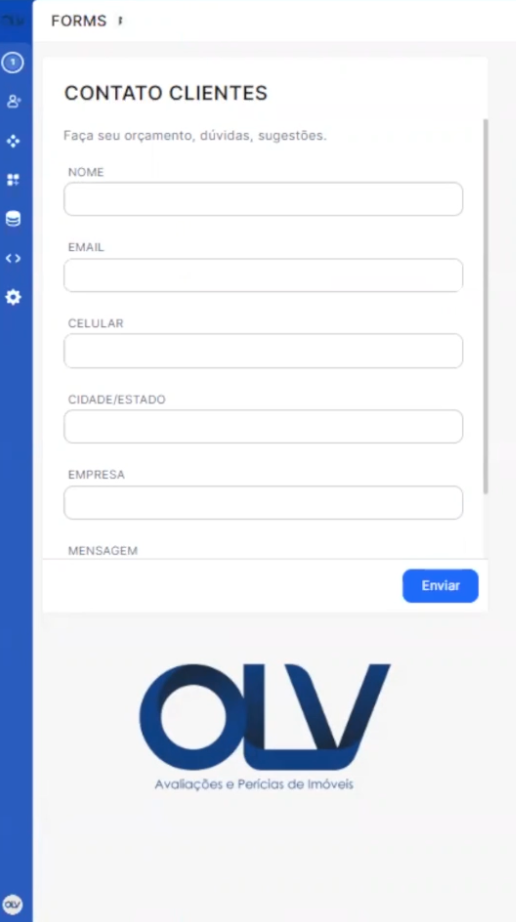
Looking forward
There are still some processes that Oliveira Engenharia wishes to automate in Jestor. For example, one of their next to-dos is having requests being automatically sorted by date on their apps, and testing out new, recently launched components that may be better suited for their operations. They are now in a stage where building the solution is done, and they can look forward to iterative improvements as they grow as a company and as a team.
The greatest achievement, however, is the tranquility of knowing that they’ve migrated to a solution that will be infinitely scalable as they continue their expansion. While some solutions would suffice for a brief period of time, they know most of them would eventually need to be abandoned, something that would cause much more stress than migrating now. As it is, with Jestor they know they can grow many times without worrying, as they can always improve their own apps to help them scale without breaking.
With Jestor, they haven’t only stopped their immediate pains: they have secured a safe way forward.

